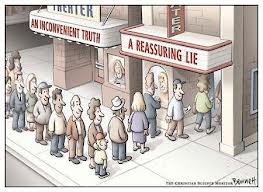This guest post by Dr. Rico Monge, Associate Professor in the Department of Theology and Religious Studies at the University of San Diego, responds to the article by Rachel Contos in the recent special issue of the Journal of Moral Theology. Dr. Monge is a specialist in comparative theology and is an ordained deacon in the Eastern Orthodox Church. Rachel Contos is a PhD Student in Theological and Social Ethics at Fordham University.
While reading Rachel Contos’s essay “Intersectionality and Orthodox Theology: Searching for Spandrels,” my mind flashed back to a challenging pastoral conversation I had a few years ago just before the national “conversation” on Critical Race Theory had reached a fever-pitch. This conversation, which was with a parishioner who had formerly been involved in white supremacist organizations, focused on the difficulties of moving out of that world, as well as the most effective ways to own one’s past with repentance. During the conversation, there was a moment that struck me as curious, but that I chose to ignore because I felt at the time it would distract from the more pressing issues involved in giving counsel to the parishioner about a sensitive situation. In this curious moment, the parishioner strongly stated his rejection of his former views, but then took special pains to qualify that his new outlook “wasn’t full intersectional feminist or anything.” My gut wanted to respond with the words of Inigo Montoya in The Princess Bride, “you keep using that word; I do not think it means what you think it means,” but at the time it seemed to me that objecting to his use of the word would have amounted to little more than academic nitpicking and a failure to address the real-world challenges requiring action for which the parishioner had come to me.
After seeing how public discourse–on both the national level and within the average Eastern Orthodox parish—unfolded over the next few months and years on both “critical race theory” and “intersectionality,” I wish now that I had a time machine in which I could travel back to that moment and distribute Contos’s essay not only to my whole parish, but to all the clergy of the many jurisdictions of Eastern Orthodoxy in the United States with the hope that dangerous misconceptions about these concepts could have potentially been nipped in the bud, and, even more important, embraced by the faithful. Her article is badly needed because it provides crucial functions in both deconstructive and constructive registers. On the deconstructive side, her article thoroughly disabuses its reader of any ignorant conceptions of intersectional analysis that have become widespread due to misrepresentation not only on social media, but also in mainstream conservative and liberal news media (and even among some academics!). On the constructive side, she skillfully demonstrates how the methodology and goals of intersectional analysis are in line with the methods and goals of Orthodox Christian theology and biblical hermeneutics.
In laying out what intersectional analysis is (and why it matters), Contos avoids the common pitfalls that have led to popular misunderstandings of intersectionality, bringing the reader back to the core metaphor used by Kimberlé Crenshaw when pioneering intersectional analysis in the legal context: “the basement metaphor” (p.154). Returning to this foundational metaphor reveals intersectionality as the mode of social analysis it was intended to be, and frees readers from the trap of viewing it as the definitive theory of a competitive identity politics of oppression it is often portrayed as. What’s at stake in this difference? Contos shows the reader how even an academic like Elizabeth Corey has done damage to the popular conception of intersectionality by presenting it as a form of identity politics (largely divorced from material realities including class analysis) in which intersecting categories (most notably including race and gender) create a hierarchy of marginalized identities in competition for who can claim the greatest aggregate oppression (pp. 152-153). This caricature of Corey’s is undoubtedly connected to the unspoken reason the Orthodox parishioner in the anecdote above did not want to be identified as a “full intersectional feminist”—a theory of humanity that essentializes and thereby quantifies a person’s cumulative oppression is understandably off-putting.
Thus, Contos’s article invaluably reminds us that intersectionality is not about a simplistic theory of human oppression, but, rather, that it is a form of analysis illuminating the multiple ways social systems locate people differently within a given society. Just as the “basement metaphor” shows how multiple factors would locate a person nearer to or further from the exit point of a crowded basement, intersectional analysis is a tool for understanding a given person’s location, advantages, and obstacles in a particular social situation. As Contos puts it, intersectional analysis reveals aspects of ourselves that are “real, but not ontological” (p.153). Put differently, intersectionality is not a theory of intrinsic identity oppression, but a way of recognizing how social constructions such as race, gender, and class become material realities within a given society. Instead of a theory of “who is the most oppressed,” Contos shows that it is a mode of analysis that can be employed to deconstruct and then reconstruct society in ways that results in more equitable location for all people.
The contribution of Contos’s article is not limited to this effective refocusing; she also demonstrates how intersectional analysis and core aspects of Eastern Orthodox Christian theology are connected and mutually beneficial (hence the architectural metaphor of the “spandrel” throughout). In this reviewer’s assessment, the two areas where her argument is especially potent are in her discussions of the Orthodox concepts of sobornost’ (i.e. salvation as life in community with one another) and theosis (salvation as union with the divine). Taken together, these two concepts emphasize how Orthodox soteriology is focused on the divinization of the human person (theosis) and that there is no divinization of the individual that manifests itself outside of human community (sobornost’) (pp.151-152). For Contos, “sobornost’ illuminates the intersectional concept of coalitional identities and social locations,” and, further, that “sobornost’, coalitional identity, and beloved community collid[e] to illuminate that to be oneself fully is to be in community” (pp. 143, 146). Particularly compelling is Contos’s sustained engagement with St. Maria Skobtsova (St. Maria of Paris), who both taught and embodied intersectional analysis, sobornost’, and theosis, in her work as a Russian immigrant in Paris who lived in service to the poor and marginalized in that society and ultimately died a martyr’s death in Ravensbruck concentration camp due to her major role in helping Jewish children escape occupied France during WWII. Contos highlights how Skobtsova’s life and teachings emphasize the this-worldly nature of sobornost’, theosis, and their overlap with intersectional analysis in quoting St. Maria as saying, “we cannot excuse ourselves from active love, from the selfless giving of our soul for our friends” (p.144). In this way, intersectional analysis thereby shows up as not only compatible with Orthodox theology, but as essential to the actualization of Orthodox soteriology.
While I have no substantive critique to make of Contos’s depiction of either intersectional analysis or Orthodox theology, some Orthodox readers may not be convinced by her invocation of John Zizioulas’s Orthodox adaptation of “social Trinitarianism”. Those in John Behr’s camp (like myself) might take issue with Zizioulas’s approach as a genuine reading of the Cappadocian fathers and other early patristic sources. But this doesn’t matter since (1) there is freedom in Orthodoxy to understand the implications of Trinitarian doctrine in many ways, and (2) Contos’s argument does not rest on this foundation and thus does not fall apart if it is challenged. Perhaps the most significant question I might raise is simply to what extent relational ontology benefits her project. If we understand intersectionality as a mode of analysis to be concerned with functional positions or locations within a given society, thereby rejecting the idea of intersectionality as a theory of ontological identity, it may be the case that the concepts of theosis and sobornost’ are more relevant than Orthodox Trinitarianism.
Contos’s essay is invaluable not only due to the scope it is able to cover in just over 20 pages, but also because of its clarity and readability. In this regard, it should be accessible and engaging to Orthodox laypeople with some background in theology who wish to better understand how their tradition intersects (pun intended) with one of the most important analytic tools in socio-economic political circles today. It is also (as mentioned in the opening paragraph) a must-read for clergy who wish to more effectively pastor their increasingly diverse congregations more effectively. Last, but by no means least, Contos’s essay also serves nicely as an introduction and/or reference to academic Orthodox theologians seeking to have a better grasp of the nuance and depth of intersectional analysis and how it can enrich nearly any subfield of Orthodox Christian theology.




